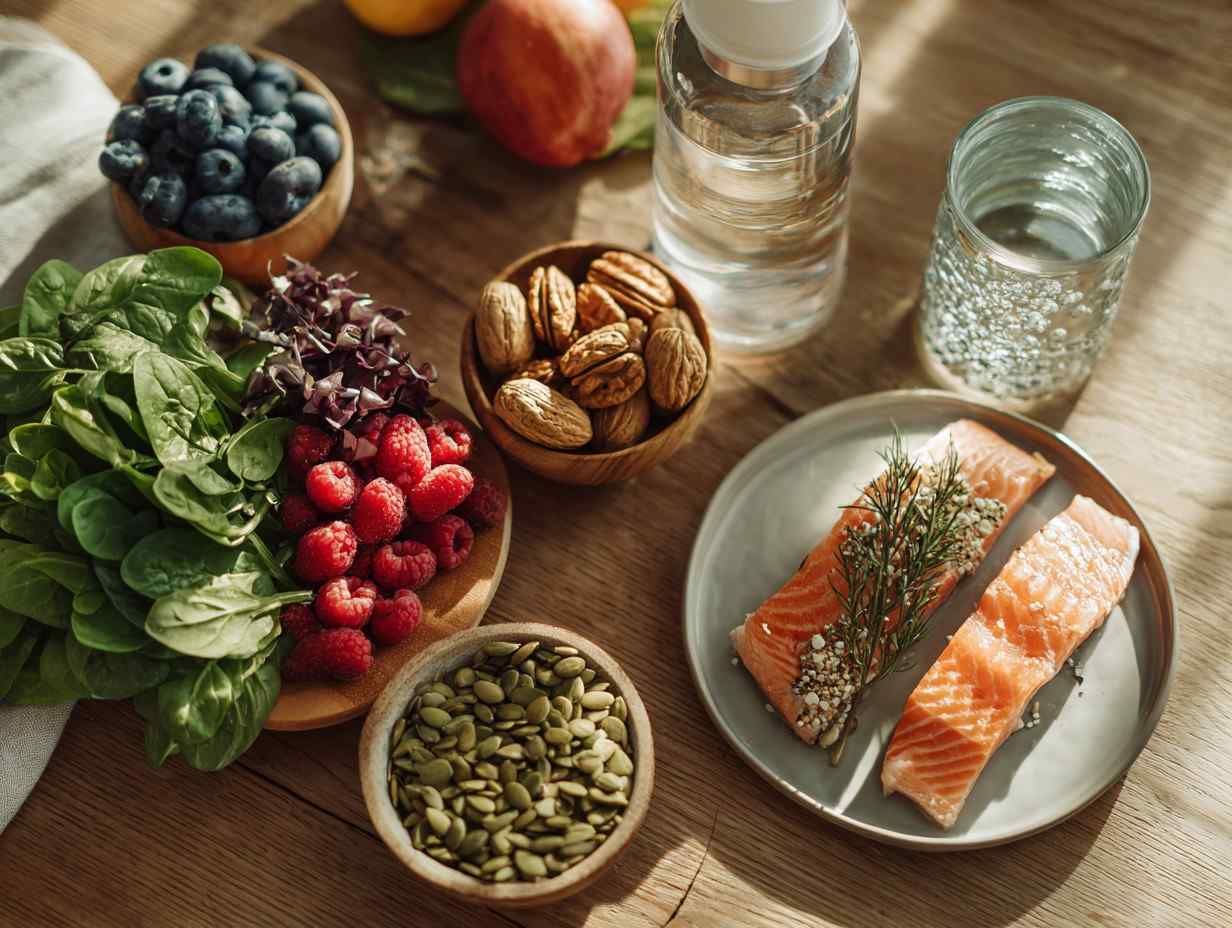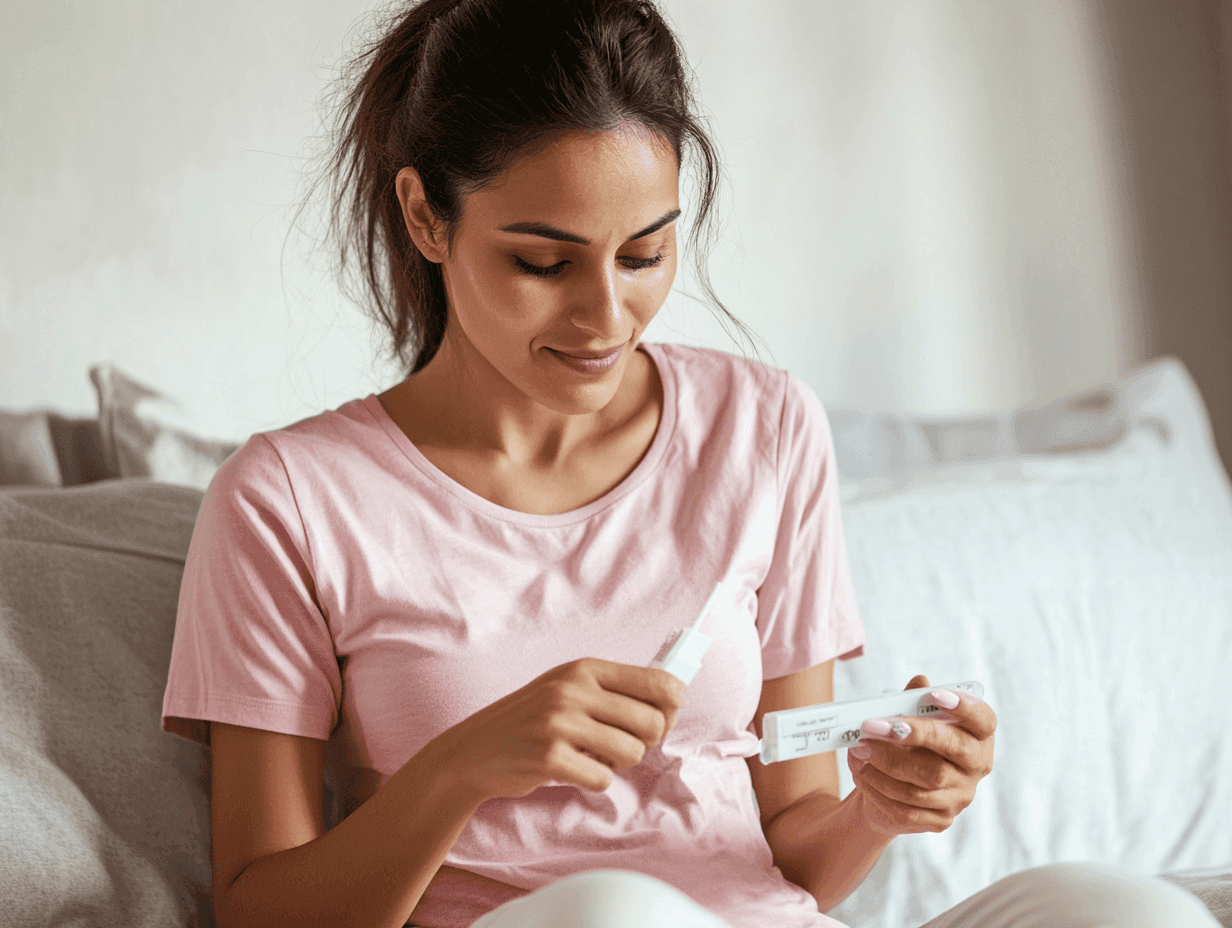Fertility Calculator by Age: Pregnancy Chances & Tips

Are you trying to get pregnant? If you are trying to have a family, you must know when to attempt it. A fertility calculator by age helps you identify your most fertile days. It also shows how age might affect your chances of getting pregnant. A healthy woman in her 20s has about a 25 to 30% chance of getting pregnant each month. With this calculator, you can plan ahead and not estimate. Fertility is reduced with age. Knowing your female fertility timeline allows you to make wise choices. It's an easy way to see your chances of pregnancy by age based on your daily cycle.
How Does a Fertility Calculator by Age Work?
A fertility calculator by age applies your age and period cycle information. It suggests the best days to conceive. It is helpful since fertility declines with age, and the calculator serves to explain.
What Information Do You Need to Calculate Fertility Chances?
To use a calculator that computes your fertility, you have to input some information. This would be your age, how long your period cycle is, and your egg production pattern. Most calculators also need to know the start date of your last period. The calculator is able to calculate your biological abilities by age. Also, it suggests your most fertile days. It is quick, easy, and valuable.
How Does Age Impact the Calculator Results?
Age is directly linked to fertility. Women are most fertile in their 20s. From 30 onwards, chances slowly reduce, and by 35, the reduction in fertility happens at a quicker frequency. The calculator uses this scientific data to give better results. It confirms your age and cycle to establish the chances of pregnancy. Knowing your fertility timeline makes planning efficient and trying at the right time.
Expected Monthly Fertility Rate Formula
P = B - (A × D)
P (Probability of conception per cycle (in %)) = B (Baseline fertility rate (usually around 25–30% for women in their early 20s)) - (A (Age of the woman) × D (Decline factor (usually around 0.5 to 1.5 depending on the dataset used)))
P = Probability of conception per cycle (in %)
A = Age of the woman
B = Baseline fertility rate (usually around 25–30% for women in their early 20s)
D = Decline factor (usually around 0.5 to 1.5, depending on the dataset used)
Table of Average Monthly Conception Rates:
Age | Monthly Probability of Conception (P) |
20–24 | ~25–30% |
25–29 | ~20–25% |
30–34 | ~15–20% |
35–39 | ~10–15% |
40–44 | ~5–10% |
45+ | <5% |
Fertility by Age: Pregnancy Chances in Your 20s, 30s, and 40s
Your fertility changes by age. You have the chance of getting pregnant in your 20s. You begin to have decreasing chances in your 30s and have reduced chances in your 40s. It can assist you in planning pregnancy and learning how success rates vary by age.
Fertility in Your 20s – Highest Conception Rates
If your age is between 20 to 29 years, your body can become pregnant. Every month, one has a 25 to 30 per cent chance of getting pregnant. It is the best time to conceive because the quality and quantity of eggs are optimal.
Fertility in Your 30s – Decline Starts
Age 30–34: conception probability
Between 30-34 years of age, the opportunities are still good but reduce to around 20%. The body starts losing its fertility, and monitoring the cycle becomes more useful. About 30 to 50% of infertility cases involve male fertility issues, too.
Age 35–39: faster decline
After the age of 35, egg quantity and quality decline quickly. Pregnancy possibility each month dwindles to about 10 to 15 per cent. By age 37, about 88% of a woman’s eggs are lost. The risk of pregnancy loss also increases. This age requires greater planning and support for conception.
Fertility in Your 40s – Lower Chances, Higher Risks
In the 40s, there is less than a 5% or less chance of being pregnant each month. The eggs are low in number, and there are more health risks during pregnancy. Yet, some women do get pregnant after 40, but the chance is much less.
Fertility After 45 – Alternative Reproduction Options
By 45 and older, most women need medical help to get pregnant. IVF and donated eggs are popular choices. The chances of getting pregnant drop with age, and donor eggs can be helpful. A doctor who specialises in fertility can help you figure out the best next step.
Key Factors That Affect Fertility Beyond Age
Fertility is not only about age. Regular ovulation, sperm quality, lifestyle, and medical conditions also play a role. Knowing the fertility problems means that the woman can identify them early.
Menstrual Cycle Regularity and Ovulation Timing
If your periods occur regularly, it is simpler to predict when you will become pregnant. Irregular periods can make it challenging to decide on your fertile days. Knowing when you will ovulate enables you to plan sex on the optimal days to become pregnant more quickly.
Sperm Quality and Male Fertility Factors
Both have the responsibility for fertility. Low sperm count, slow movement, or morphologically abnormal sperm can reduce the odds. Couples often check the normal sperm count to get pregnant as part of fertility evaluation. Men should also eat well to maintain their fertility. Avoid the heat around the testicles, and reduce stress to improve sperm quality.
Lifestyle and Health Conditions Impacting Fertility
Smoking, drinking, being overweight, or stress may reduce fertility. Healthy living maintains eggs and sperm. Exercise, eating habits, and enough sleep are easy ways to improve fertility.
Reproductive Health Issues Like PCOS or Endometriosis
PCOS in ayurveda and endometriosis are common fertility problems for women. They can cause abnormal periods, blocked tubes, or poor-quality eggs. These fertility problems due to age increase the difficulty in becoming pregnant. Early treatment and diagnosis improve the chances of success.

How to Use a Fertility Calculator by Age – Step-by-Step Guide?
A fertility calculator by age helps you know the best days to get pregnant. It estimates your fertility score and also predicts your chances of getting pregnant.
# Step 1: Choose a Trusted Fertility Calculator Online
Find a good fertility calculator on the web. Find one that is simple, safe, and accurate. Good sites give better results.
# Step 2: Enter Accurate Personal and Cycle Details
Enter your age, your date of last monthly period, and the length of your cycle. Your highest fertility score by age will be provided with accurate information.
# Step 3: Understand Your Fertility Score or Chances of Pregnancy
The calculator will show you the best days to get pregnant and your chances of being pregnant. This helps you plan better and understand how your body works.
# Step 4: Track and Monitor Over Time
Use the tool every month to look for shifts. This assists you in determining the odds of pregnancy and patterns in your cycle.
Realistic Examples: Fertility Calculation at Different Ages
Various ages have varying chances of getting pregnant. A pregnancy chances calculator gives you figures based on facts. Use a chart of fertility by age to find out how your chances differ and how you can better plan your pregnancy.
Age 25 Fertility Estimation
At the age of 25, the fertility chart shows that one has a 25-30% shot of getting pregnant each month. The probability calculator shows high scores when you are 25 years old. Thus, it indicates the perfect time to get pregnant.
Age 32 Fertility Score
At 32 years old, your chances slightly decrease. The pregnancy probability calculator shows a 20 per cent chance every month. The fertility chart at various ages shows good figures, but thinking about a baby is the time now.
Age 38 Fertility Prediction
At 38, the chance of getting pregnant is only 10 to 15 per cent. The pregnancy probability calculator shows that fertility decreases as you get older. Egg quality decreases quickly at this age, so having sex during ovulation is a must.
Age 42+ Fertility Situation
After 42, the chances of natural conception are less than 5 per cent per month. The success rate drops to 10% or less after age 40. The fertility chart by age indicates a major drop. The probability of pregnancy calculator usually advises seeking medical help. IVF or egg donation might be required to get pregnant at this age.
Best Online Fertility Calculators and Fertility Apps
Fertility apps and calculators assist you in monitoring ovulation, periods, and fertile periods. These are useful for those women who wish to have a baby. They are easy to use and help you in planning pregnancy at the correct time.
Top-Rated Fertility Calculators for Age-Based Predictions
Websites like Flo, Ava, and BabyCenter provide calculators according to your cycle length and age. They predict when you will ovulate and give you your chances of becoming pregnant. Some of them also offer helpful tips. They are most reliable if you update your period information monthly.
Recommended Apps to Track Ovulation comprehension and Fertility
Apps such as Clue, Glow, and Ovia are helpful in monitoring ovulation. They keep you informed about your fertile days and allow you to track symptoms. You can check mood changes, pain, and cervical mucus. These apps keep you informed about your cycle and prepared for pregnancy.
How to Combine Calculator Results With Medical Advice?
Fertility apps and ovulation calculators are helpful but not a substitute for guidance. Show your tracker findings to your doctor for better understanding to help you with periods, hormonal problems, and when to have fertility tests to plan.
Tips to Improve Fertility Naturally at Any Age
Pregnancy is something that simple lifestyle modifications can enhance. Highly important are healthy eating, exercising, and monitoring your cycle. It is a must to know how you can make your fertility better to control and multiply your chances.
Healthy Diet and Nutrition for Better Fertility
Eat iron-rich, folic acid, and zinc-rich foods. Include more fruits, vegetables, nuts, and seeds in food. Do not eat packaged foods and sugar. Enough water and low caffeine aid as well. Hormone health is improved by a healthy diet, which will increase your fertility.

Exercise, Weight Management, and Stress Reduction
Working out, such as walking or yoga, prevents weight gain and maintains your hormones. An abnormal or insufficient amount of body fat may affect ovulation. Attempt to sleep well and get rid of stress using hobbies, breathing activities, or music. Fewer stresses give you a greater possibility of being pregnant.
Timing Intercourse During the Fertile Window
To get pregnant, have sex in your fertile window, 5 days before ovulation. One can identify these days through a fertility calculator. This puts you in the ideal position to get pregnant. Monitoring of humidity and uterus mucus can also help in monitoring the time.
When to Consider Medical Support or Fertility Treatments
When you are trying to get pregnant without success within a year (or 6 months when you are over 35), consult a doctor. They are in a position to test your hormones and provide treatment. You should know the benefits and raise interest, but professional help is necessary.
When to See a Fertility Specialist for Low Fertility Scores
When you test low in your fertility and fail even in natural efforts, get to consult a specialist. It might need professional treatment, frequent abnormal periods, or medical issues. A physician makes tests, interprets results, and proposes an efficient plan for pregnancy.
How Long to Try Before Seeking Help
The majority of couples get pregnant within a year. There is no fertility problem unless you are below 35 years and have been trying for a year; see a doctor. In case of more than 35, consult within 6 months. Seeking early guidance enables identifying issues and your probability of conceiving.
Common Fertility Tests and Assessments
To assess the level of the hormones, doctors can recommend blood tests for amh levels and FSH. A pelvic ultrasound examines your uterus and ovaries. Men may need a semen analysis. The tests are helpful to identify issues early in the stages. According to the outcomes, the physician will tell you what to do next to get impregnated.
Treatment Options: IUI, IVF, Egg Freezing
Fertility treatments at this age consist of IUI, IVF, and egg freezing. During IUI, sperm are put into the uterus. IVF blends the egg and the sperm in a laboratory. Egg freezing assists in postponing pregnancy. The success rates vary with your age, health, and the time you start the treatments.

Conclusion: Take Charge of Your Fertility Journey
Planning the pregnancy using a fertility calculator by age helps you plan the time. Such tools help to increase the awareness of fertility and reproductive health choices. Once a calculator, change tracking, and discussing it with a doctor are used. Have a suitable plan for pregnancy at your age. Each of the fertility experiences is unique. Be aware, be positive, and be assured of the next step.
You May Like

Best 15 Yoga Poses for Conceiving – Boost Fertility Naturally

Does Ashwagandha Boost Fertility? Benefits & Tips

10 प्रेग्नेंसी के लक्षण: क्या आपको दिख रहे हैं ये शुरुआती संकेत?

First 72 Hours Of Pregnancy Symptoms - How to Confirm

Top 10 Tips to Get Pregnant with PCOS Quickly
Frequent Asked Questions
The fertility calculator provides an estimate of your cycle, but it is not very accurate. It is more effective when you track periods daily and merge with the doctor's recommendations.
Actually, it is capable of helping women over the age of 35 to identify the fertile days. But, with the age-related loss, professional help offers more opportunities for becoming pregnant earlier.
Other calculators make attempts to adjust for irregular cycles or PCOS. It is better to discuss everything with a doctor and to get apps with symptom tracking to know more.
Indeed, the majority of fertility calculators are free and easy to use. All you need to do is key in your period information. The reminders and period tracking are provided by many at the cost of a few taps.
No, a majority of the calculators are based on women's menstrual cycles. Male fertility is not checked. But so is the health of sperm. Pregnancy should be planned, taking into consideration both the man and the woman.

Success Stories with Gynoveda across India
Talk to Gynoveda Today


